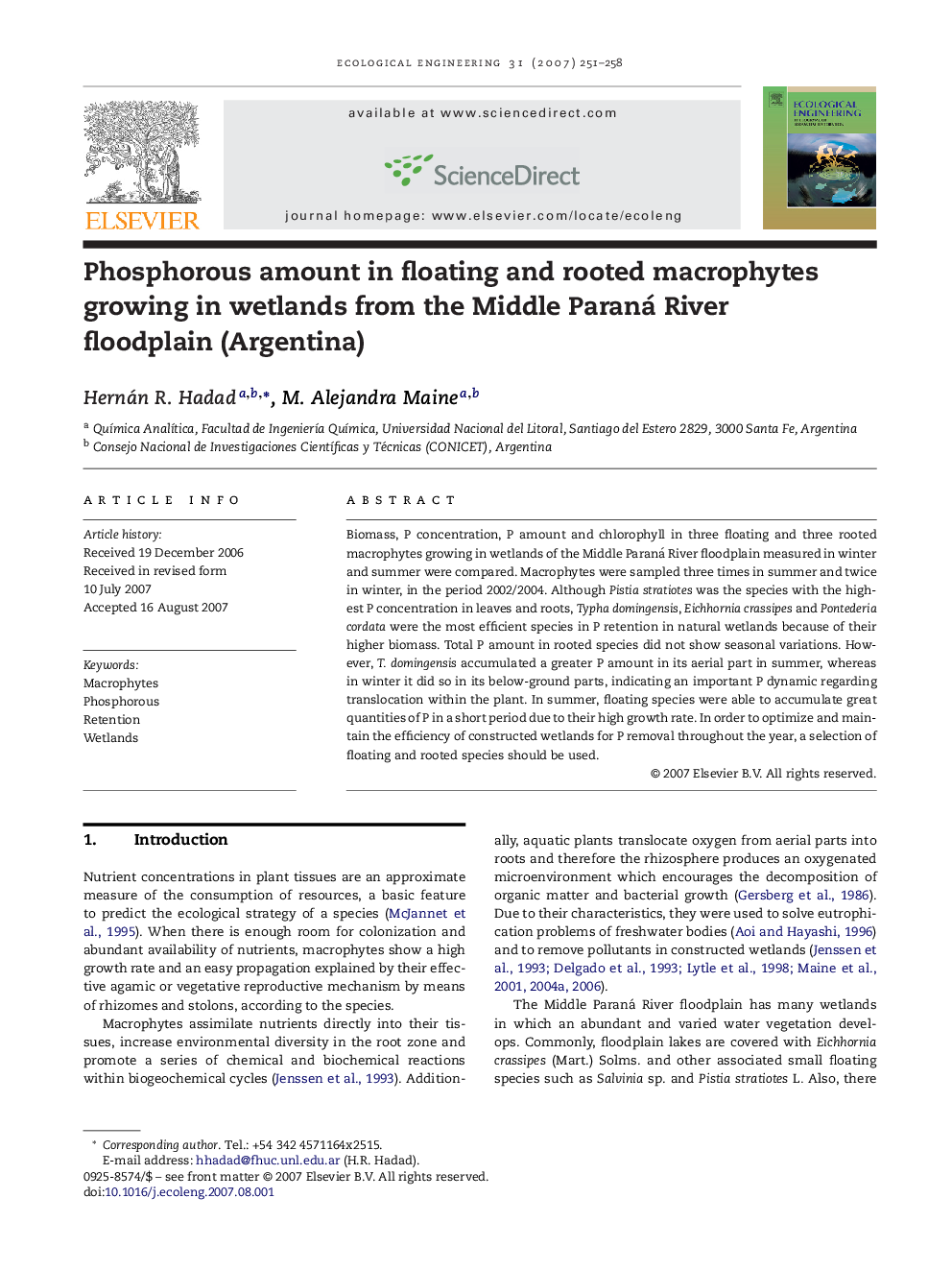| Article ID | Journal | Published Year | Pages | File Type |
|---|---|---|---|---|
| 4390909 | Ecological Engineering | 2007 | 8 Pages |
Biomass, P concentration, P amount and chlorophyll in three floating and three rooted macrophytes growing in wetlands of the Middle Paraná River floodplain measured in winter and summer were compared. Macrophytes were sampled three times in summer and twice in winter, in the period 2002/2004. Although Pistia stratiotes was the species with the highest P concentration in leaves and roots, Typha domingensis, Eichhornia crassipes and Pontederia cordata were the most efficient species in P retention in natural wetlands because of their higher biomass. Total P amount in rooted species did not show seasonal variations. However, T. domingensis accumulated a greater P amount in its aerial part in summer, whereas in winter it did so in its below-ground parts, indicating an important P dynamic regarding translocation within the plant. In summer, floating species were able to accumulate great quantities of P in a short period due to their high growth rate. In order to optimize and maintain the efficiency of constructed wetlands for P removal throughout the year, a selection of floating and rooted species should be used.
